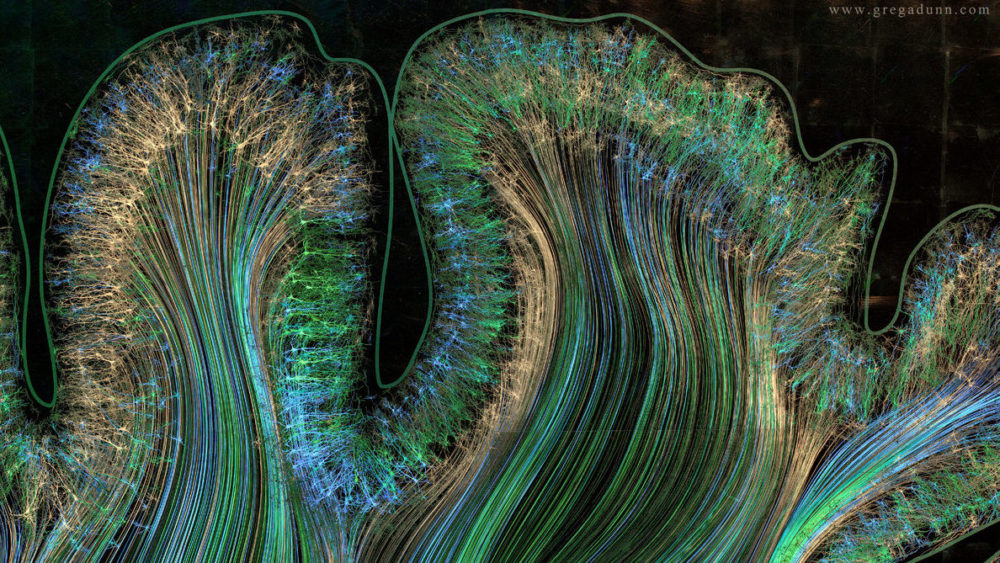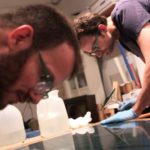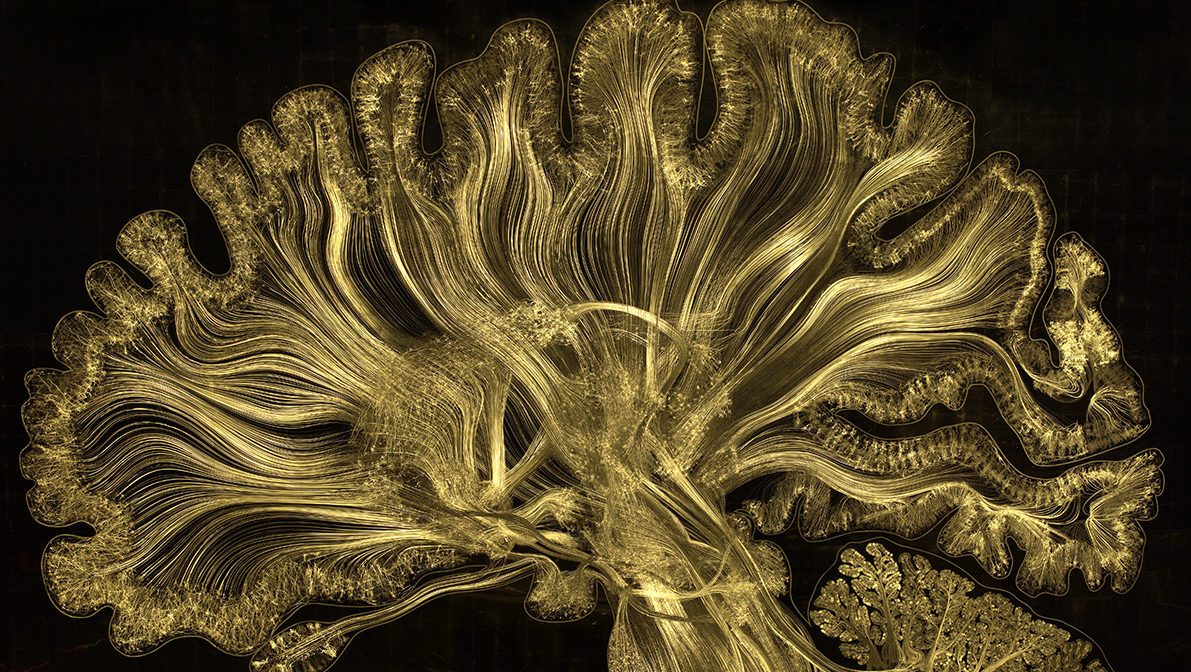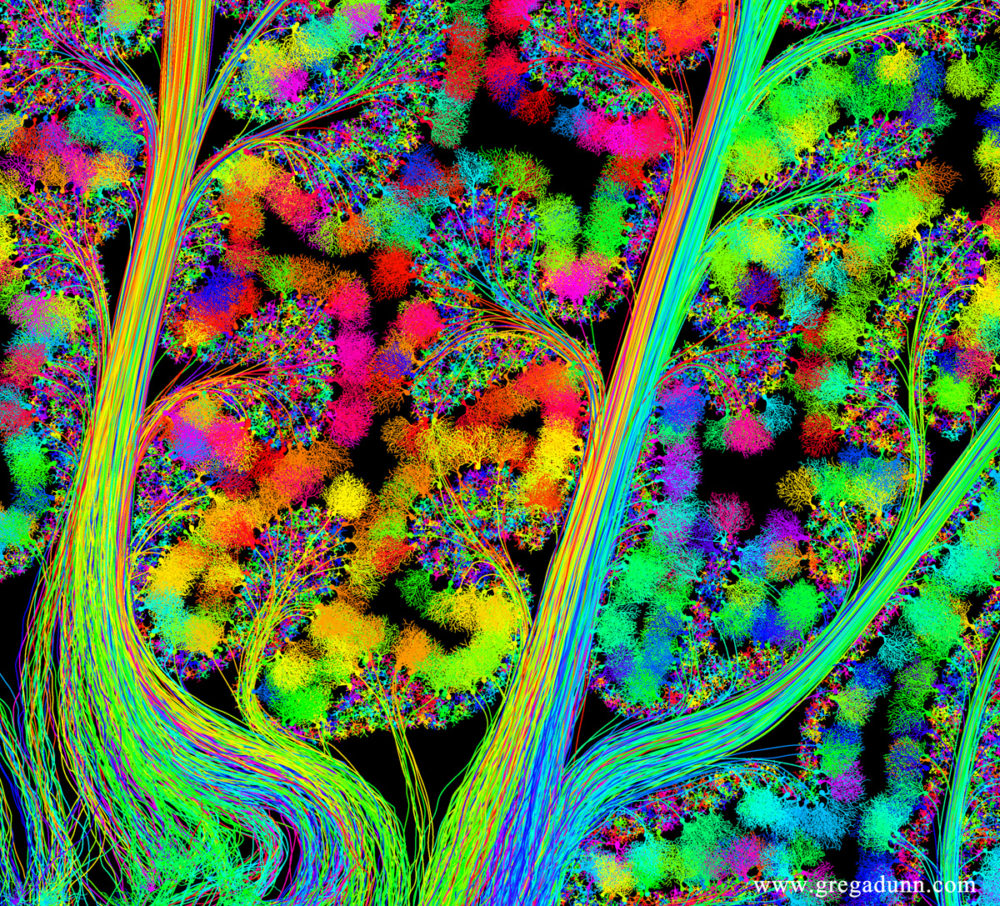An unprecedented insight into the brain and itself … the neural choreographies of Self Reflected are designed to mirror the functioning of the viewer’s own mind:
Inspired by the cutting edge of neuroscience and engineering to expand our understanding of the natural world, Dr. Greg Dunn, neuroscientist and artist, and Dr. Brian Edwards, physicist and artist create Self Reflected images. The images are taken from a single piece of art, an animated reflective microetching, a technique developed by the artists using handmade lithographs that manipulate light on a microscopic scale to precisely control the reflectivity of metallic surfaces, evolving according to the perspective of the viewer and thus impossible to capture in still images.
These images —which are not brain scans— are meticulously created through a combination of hand drawing, deep neuroscience research, algorithmic simulation, digital design, photolithography, gilding, and strategic lighting. Through the immense amount of detail and simulation of neural activity, Self Reflected achieves an unprecedented level of detail and scope unattainable with current scanning technology. Self Reflected asks the question:
“is the brain uniquely tuned to appreciate its own fractal-like anatomy and elegant, wavelike electrical activity as a consequence of those traits underlying its own construction?”
and was created to “elucidate the nature of human consciousness, bridging the connection between the mysterious three-pound macroscopic brain and the microscopic behavior of neurons“; and “ to remind us that the most marvelous machine in the known universe is at the core of our being and is the root of our shared humanity.” Greg Dunn, The Art and Concept of Self Reflected
 The motor and parietal cortex, regions involved in movement and sensation, respectively. (Photo by Greg Dunn and Will Drinker)
The motor and parietal cortex, regions involved in movement and sensation, respectively. (Photo by Greg Dunn and Will Drinker)
And “ not to simplify the brain’s functionality for easier consumption, but to depict it as close to its native complexity as possible so that the viewer comes away with a visceral and emotional understanding of its beauty” and “to elevate the consciousness of the average person to the exquisite machine that most defines our humanity.” Greg Dunn The Art and Concept of Self Reflected
Self Reflected was designed to be a highly accurate representation of a slice of the brain and is informed by deep neuroscience research. After extensive scientific research about each brain region, location, neuron types, connections, firing patterns, neurotransmitter type, etc. and considerable discussion, the scientists settled on depicting a specific oblique sagittal slice of the human brain, providing a variety of structures and circuitry, and further the computation and art.
“Every square micron of space in the brain is utilized”creating dramatic twisting of axon bundles in convex curvatures and reduction in axon bunching in convex curvatures. Using data from diffusion spectrum imaging as a guide, the artists hand drew and painted neurons and axons, and neuroscience to determine connectivity. Mathematical simluations were then utilized to chaotically link the center points of neurons with end points and “infuse causalitity”. With the animations of microetching, the connections appears to have timed delivery routes. The image below illustrates this intricate artistic closeup of the cerebellum region located at back of the skull, contributing to coordination and balance:
In The Art and Concept of Self Reflected, Dr. Dunn reflects on the irony between the regularity and patterned human behavior and the complexity of the human brain. He reminds us that despites the amount of variation in the wiring of neurons and axons, the brain is a poor generator of randomness, but that it’s natural functional flexibility allows it to achieve a very high degree of sophistication, reaching its maximum potential when teetering on the edge of utter chaos…
I wonder if suffering and confusion are perhaps necessary to create enough chaos to change our wiring, and experience a sense of divinity within our own mind !?
 Visit Pure Treasures to discover more prints and learn more about microetching.
Visit Pure Treasures to discover more prints and learn more about microetching.
The first version of Self Reflected is on permanent exhibition at the Franklin Institute, Philadelphia, PA.
Additional versions can be produced for exhibition and sale.
This project was funded by the National Science Foundation.



